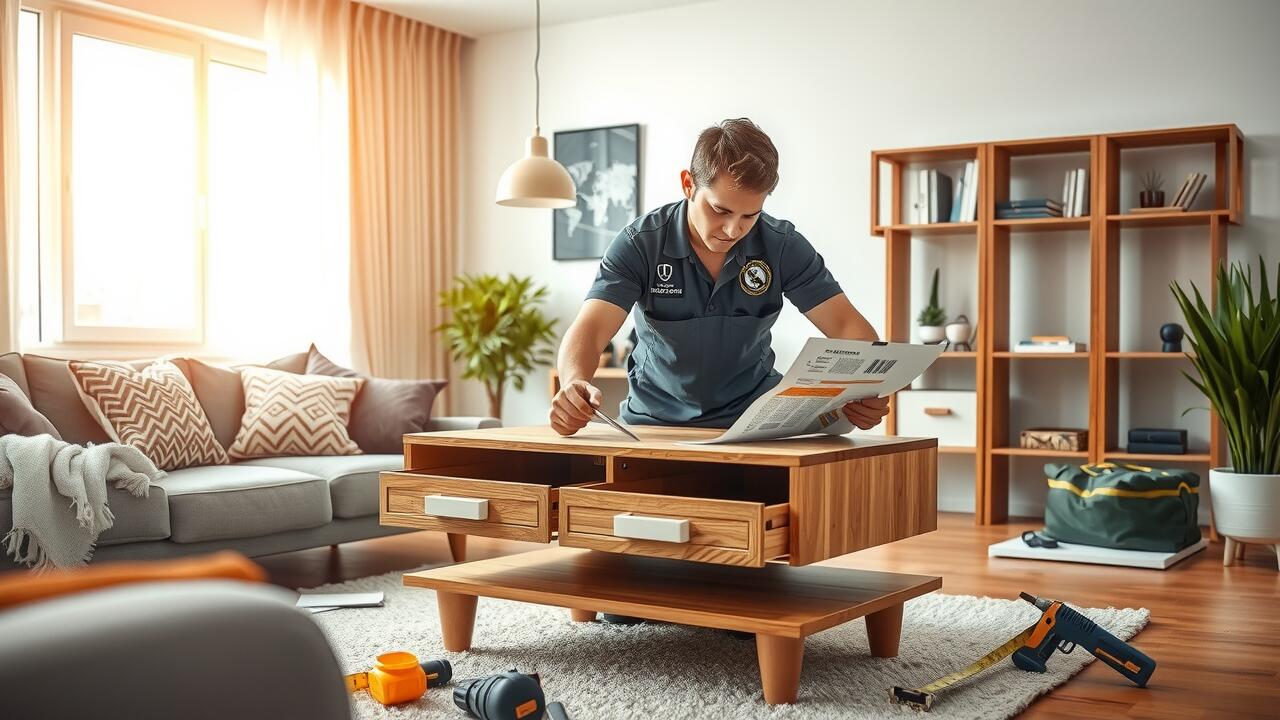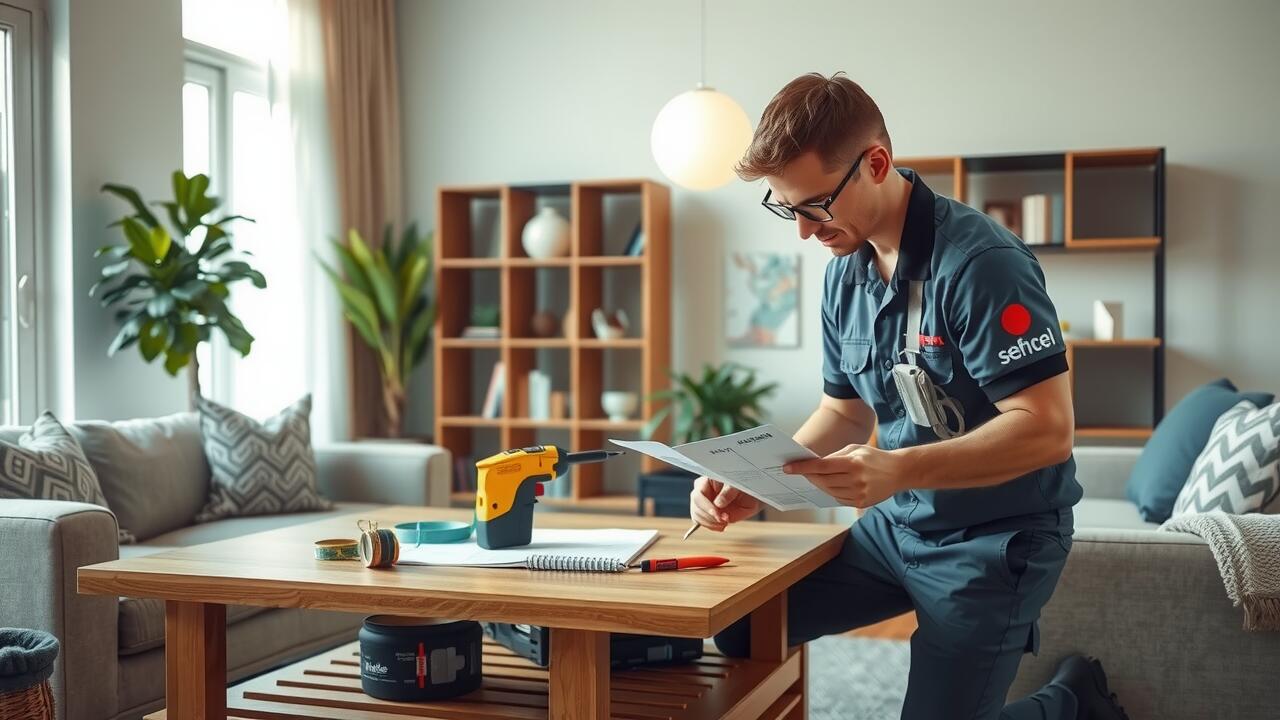
Table Of Contents
Organization Tools to Streamline Assembly
Effective organization tools can greatly enhance the efficiency of furniture assembly and disassembly. A portable toolbox, for example, keeps all necessary instruments in one place, preventing loss or misplacement of smaller items. Labeling containers or sections within the toolbox can also help ensure that each component is easy to locate when needed. Additionally, using a magnetic strip can hold screws and metal parts securely, reducing the risk of them scattering during the assembly process.
Utilizing a setup area free from clutter can further streamline the assembly experience. Designating a specific workspace creates a focused environment, allowing for smoother transitions between different phases of the project. For those in Oakview, Silver Spring, utilizing a combination of these organizational tools can optimize the furniture assembly and disassembly process. Prioritizing organization not only makes tasks less stressful but also enhances overall productivity.
Best Practices for Keeping Tools Accessible
Keeping tools accessible is essential for effective furniture assembly and disassembly. Consider investing in a tool chest or organizer that features labeled compartments. This allows quick identification and retrieval of tools, minimizing downtime during projects. Additionally, utilizing magnetic strips can help keep frequently used items within reach. If you often work on furniture assembly and disassembly in Oakview, Silver Spring, having a designated workspace aids in maintaining organization.
Moreover, a well-structured approach can enhance your workflow. Group tools by function—such as screwdrivers, wrenches, and pliers—and store them together. This systematic arrangement speeds up the process and reduces the frustration of searching for misplaced tools. Regularly reassessing your setup ensures that it continues to meet your needs, especially during busy periods of furniture assembly and disassembly in Oakview, Silver Spring.
Maintenance of Tools for Longevity
Proper maintenance of tools is crucial for ensuring they remain effective during furniture assembly and disassembly. Regular cleaning helps prevent dust and debris from accumulating, which can hinder performance. It’s also important to inspect tools for signs of wear or damage. Addressing these issues promptly can prevent more significant problems from developing down the line.
Storing tools in a climate-controlled environment can prolong their lifespan. Humidity and temperature fluctuations can lead to rust and corrosion, especially on metal components. For those engaged in furniture assembly and disassembly in Oakview, Silver Spring, keeping tools organized and in good condition creates a smoother and more efficient process. This not only improves workflow but also enhances safety during assembly tasks.
Tips on Caring for Your Equipment
Proper care of your tools is essential to ensure they remain effective and last for years. Regularly inspect each item for signs of wear, rust, or damage. Cleaning tools after use prevents debris buildup that can hinder performance. For tools that come into contact with wood, such as screwdrivers and drills, wipe them down to remove dust and residue. In addition, storing tools in a dry place protects them from moisture, which can lead to rust and corrosion.
When you invest in equipment for furniture assembly and disassembly in Oakview, Silver Spring, consider using protective cases or organizers. These not only keep your tools organized but also safeguard them from accidental damage. For power tools, follow the manufacturer's guidelines for maintenance, including lubrication and battery care. Regularly charging batteries and checking cords for frays can extend their life and enhance performance.
Choosing the Right Tool Kit
Selecting the right tool kit is crucial for anyone involved in furniture assembly and disassembly in Oakview, Silver Spring. A well-rounded tool kit should contain essential items such as a combination of screwdrivers, Allen wrenches, and a reliable hammer. Consider the types of furniture you frequently assemble or disassemble to ensure your kit addresses specific needs. Quality tools can make a significant difference in efficiency and ease, reducing the likelihood of damage to your furniture.
In addition to basic tools, including a measuring tape, a level, and a mallet can enhance your capabilities. These items promote precision and stability, essential for ensuring your furniture is correctly assembled. Don't overlook the value of safety equipment like gloves and goggles. Investing in a versatile tool kit tailored to your furniture projects can help streamline the assembly process while prioritizing safety and quality.
What to Include in Your Tool Kit
A well-equipped tool kit is essential for anyone tackling furniture assembly and disassembly in Oakview, Silver Spring. Standard items include a flathead and Phillips screwdriver, an adjustable wrench, and a set of Allen wrenches. These tools cater to various screw types and bolts commonly found in furniture assembly. Additionally, include a measuring tape for accuracy and a utility knife for cutting packaging materials or adjusting components.
It's also beneficial to add a hammer to your toolkit for any necessary adjustments. A level ensures that assembled furniture stands straight and maintains its integrity. For those tackling larger projects, a power drill with appropriate bits can significantly expedite the assembly process. Finally, a small storage container for spare screws and connectors is useful to keep everything organized during your work.
FAQS
What are the essential tools needed for furniture assembly?
Essential tools for furniture assembly typically include a power drill, screwdrivers (both flathead and Phillips), a hammer, adjustable wrenches, pliers, and measuring tape.
How can I organize my tools to streamline the assembly process?
To organize your tools, consider using a tool chest or a portable tool bag. Labeling compartments and keeping frequently used tools easily accessible can also help streamline the process.
What are some best practices for maintaining my tools?
Best practices for maintaining tools include cleaning them after use, storing them in a dry place, checking for wear and tear regularly, and using appropriate lubricants for moving parts to prevent rust and corrosion.
What should I include in my furniture assembly tool kit?
Your furniture assembly tool kit should include basic tools such as screwdrivers, a hammer, a power drill, measuring tape, a level, and any specific tools recommended by the furniture manufacturer.
How often should I replace my tools?
You should replace your tools as needed based on wear and tear. If a tool is damaged, rusted, or not functioning properly, it’s time to consider getting a new one to ensure efficient and safe assembly.
